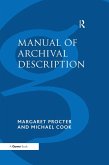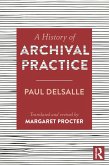- implementing timely inventory standards, using approved marketing practices, keeping good user records, and having knowledge of insurance coverage
- making a recovery plan that deals with the impact of a theft and how it may affect staff and the actual workings of a department or archive
- knowing who to contact after a theft, such as local enforcement agencies, federal officials, and listing the theft on the Library Security Officer Listserv (LSO) to alert local and national libraries and collectors to the crime
- incorporating internal audits in a university setting to prevent crime and ensure accounting and administration controls are effective and efficient
- instituting a preservation program for collections, which includes temperature control of the indoor environment, studying the building design for weaknesses or potential dangers, reformatting deteriorating materials, and limiting the handling of materials
- making plans for the aftermath of a disaster, such as creating methods for risk assessment, developing collection priorities, and making rehabilitation policies for materialsThe chapters in Management of Library and Archival Security offer unique insight from a former F.B.I. agent with extensive experience in library thefts, a preservation specialist, and an archivist with extensive conservation experience in order to provide you with all of the information you need to safeguard library and archive collections against theft, environmental conditions, natural disasters, and resultant financial loss.
Dieser Download kann aus rechtlichen Gründen nur mit Rechnungsadresse in A, B, BG, CY, CZ, D, DK, EW, E, FIN, F, GR, HR, H, IRL, I, LT, L, LR, M, NL, PL, P, R, S, SLO, SK ausgeliefert werden.









